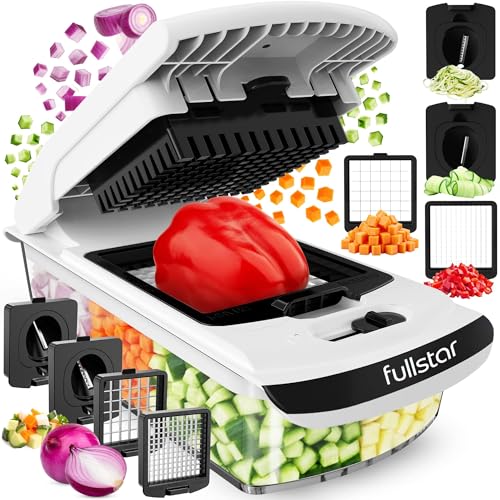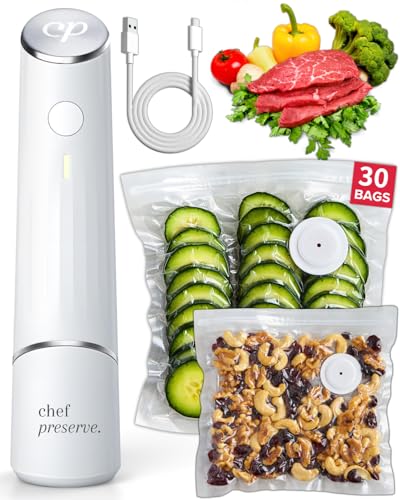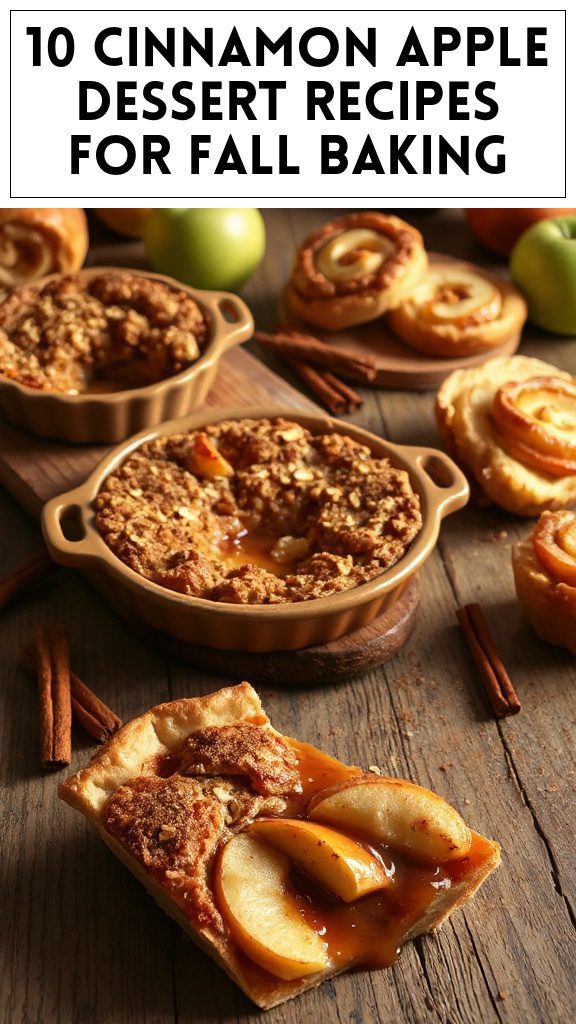Frittata Origins in Italy
The frittata, a vibrant and versatile dish, traces its origins to the heart of Italy, where culinary traditions intertwine with simple, wholesome ingredients.
Its history reveals a connection to the Italian cucina povera, which emphasizes frugality and resourcefulness, showcasing how leftover ingredients can be transformed into a delightful meal.
Unlike its French counterpart, the omelet, the frittata is often cooked slowly, allowing a variety of vegetables, cheeses, and meats to meld together in a harmonious blend of flavors.
This dish became a staple not only in Italian homes but also in restaurants, gaining popularity worldwide.
Celebrated for its adaptability, the frittata continues to embody the spirit of Italian cuisine, combining rustic charm with sophisticated taste.
- The Original Pro Chopper - Our superstar veggie slicer has been creating waves on TikTok! Simple to use,...
- Easy Meal Prep with Rust-Resistant Blades - Our vegetable chopper is perfect for anyone who wants to eat...
- 5-Star Design - The soft-grip TPU handle ensures controlled chopping, while the non-skid rubber base...
Health-Conscious Food Enthusiasts
As health-conscious food enthusiasts seek vibrant, nutrient-dense meals, the frittata emerges as an ideal choice that marries nourishment with flavor.
This versatile dish is a canvas for showcasing seasonal spring flavors, making it an exciting option for those looking to elevate their healthy meal repertoire. Packed with an array of colorful vegetables, the frittata provides essential vitamins and minerals while offering a delightful taste experience.
Its ease of preparation allows for creativity, encouraging cooks to experiment with fresh herbs and seasonal ingredients. Additionally, the inclusion of whole eggs contributes protein and healthy fats, fortifying the meal.
Ultimately, the frittata not only satisfies culinary cravings but also aligns perfectly with the desires of health-savvy individuals seeking delicious, wholesome food.
- Makes Everything Simple : Just forget your bagged cheese! Only turn the handle for several times and get...
- Premium Material : All parts of the rotary cheese grater are made of food grade ABS material, no BPA. The...
- Three Option Grater : The parmesan cheese grater finishes food preparation with slicing, shredding and...
Essential Ingredients

A colorful medley of fresh ingredients sets the stage for a delightful frittata. Essential components include vibrant seasonal vegetables such as tender asparagus, sweet bell peppers, and earthy spinach.
These fresh ingredients not only contribute to the dish’s visual appeal but also deliver a range of flavors that awaken the palate. Sweet cherry tomatoes add bursts of juiciness, while aromatic herbs like basil and chives infuse the frittata with a refreshing essence.
To bind these beautiful vegetables, farm-fresh eggs create a fluffy, cohesive texture. Additionally, a sprinkle of cheese, such as feta or goat cheese, elevates the dish with creaminess.
The thoughtful combination of these vibrant ingredients ensures a nutritious and delightful springtime meal perfect for any occasion.
- 💰 REDUCE WASTE AND SAVE MONEY: Chef Preserve keeps FOOD FRESH 5 TIMES LONGER than non-vacuum storage...
- ✅ POWERFUL, QUICK & EASY TO USE: Simply press the button to start. The device vacuum seals a bag in 5...
- ♻️ REUSABLE & RESEALABLE BAGS: Chef Preserve comes with dishwasher, freezer, refrigerator, and...
Cooking Steps
Begin by preheating the oven to a moderate temperature, ensuring it will be ready to finish the frittata perfectly.
Next, whisk the eggs in a bowl, incorporating a splash of milk for creaminess.
In a separate pan, sauté the colorful array of spring vegetables using effective cooking techniques like softening or browning to enhance their flavors.
Once cooked, blend the vegetables into the egg mixture, adding herbs for an aromatic touch.
Pour the mixture into a prepared skillet, allowing it to set on the stovetop briefly.
For a variation, consider adding cheese or meats to elevate the dish’s richness.
Finally, transfer the skillet to the oven to bake until golden and puffed, creating a delightful, colorful frittata to savor.
- Generous Capacity: 7-quart slow cooker that comfortably serves 9+ people or fits a 7-pound roast
- Cooking Flexibility: High or low slow cooking settings, with convenient warm function for ideal serving...
- Convenient: Set it and forget it feature enables you to cook while at work or performing daily tasks
1. Preheat Your Cast Iron Skillet

Before pouring in the frittata mixture, preheating the cast iron skillet is essential for achieving a perfectly cooked dish. This crucial step enhances the frittata’s texture and helps to prevent sticking, making clean-up easier.
To preheat, the skillet should be placed over medium heat, allowing it to warm evenly. A well-maintained skillet, reflecting proper skillet care, will distribute heat uniformly, which is vital for achieving that golden crust.
As the cooking techniques unfold, the skillet transforms, reaching the ideal temperature for cooking. This not only seals in flavors but also promotes even cooking of the vibrant spring vegetables incorporated into the frittata.
The result is a deliciously fluffy dish ready to delight any brunch table.
- 100% Leak-proof: Guaranteed no-spill seal and secure latches
- Crystal-clear Tritan Built: Stain-resistant and odor-resistant material for a clear view of contents
- Lightweight & Sturdy: Easy to carry, yet durable for everyday use
2. Whisk Eggs With Fresh Herbs

Whisking eggs with fresh herbs elevates the frittata to a new level of flavor and freshness. The vibrant, fragrant herb combinations — including chives, basil, and parsley — harmoniously blend with the velvety texture of the whipped eggs.
As the cook meticulously whips the eggs, incorporating each herb with precision, the mixture becomes a canvas for springtime zest. The release of aromatic oils from the herbs infuses the eggs, creating a delightful base for the frittata.
This thoughtful approach not only adds depth but also highlights the season’s bounty. With every whisk, the eggs’ golden hues reflect the bright greens of the herbs, enticing the senses and promising a delightful culinary experience, perfectly suited for an Easter celebration.
- 𝗘𝗳𝗳𝗼𝗿𝘁𝗹𝗲𝘀𝘀 𝗪𝗲𝗶𝗴𝗵𝗶𝗻𝗴: Supports 5 units...
- 𝗣𝗿𝗲𝗰𝗶𝘀𝗲 𝗥𝗲𝘀𝘂𝗹𝘁𝘀: Accurately weighs up to 11 lb/5 kg with 1 g...
- 𝗦𝗶𝗺𝗽𝗹𝗲 & 𝗖𝗼𝗺𝗽𝗮𝗰𝘁: The small and sleek scale is a perfect fit for...
3. Add Vegetables to Egg Mixture

To create a vibrant and nourishing frittata, a medley of seasonal vegetables is essential in the egg mixture.
Colorful options such as bell peppers, spinach, and zucchini not only enhance the dish’s visual appeal but also provide a significant nutrient boost. Bright reds, greens, and yellows interweave to create a feast for the eyes, enticing anyone to indulge.
As the vegetables gently mingle with the whisked eggs, they release their natural flavors, delivering a savory depth to the frittata. Incorporating vegetables like asparagus or cherry tomatoes adds even more layers of texture and taste.
This harmonious blend not only highlights the vibrant colors of spring but also ensures a wholesome, delicious meal that nourishes both body and spirit.
- Instant Read Food Thermometer | Our instant read thermometer features a temperature probe and advanced,...
- Multi-Use | From bbq thermometer to baking thermometer, our digital food thermometer for cooking is...
- Easy-Read Digital Thermometer For Cooking | Large instant thermometer dial with bright blue backlight...
4. Bake Until Set

The frittata transforms in the oven as it bakes until set, creating a delicate balance between fluffy texture and rich flavors. Using effective baking techniques, the cook ensures that the mixture of eggs and vibrant vegetables transitions from liquid to a cohesive dish.
The heat envelops the frittata, gradually coagulating the proteins in the eggs, which contributes to its tender, yet firm consistency. As the edges begin to rise and turn golden, a tantalizing aroma fills the kitchen, indicating that it’s nearing perfection.
Monitoring the frittata through the oven window reveals the subtle shifts in color and texture, guiding the timing for when it has fully set. Patience is key; overbaking could compromise the desired frittata texture, leading to a less enjoyable dish.
- Versatile 54-Piece Collection: Elevate your kitchen with the Home Hero 54-Piece Kitchen Utensil Set, a...
- Durable and Long-Lasting: Crafted from premium stainless steel, these kitchen utensils are designed to...
- Perfect Holiday Gift: Delight your loved ones with this kitchen utensils gift set this festive season....
5. Cool Before Serving

After emerging from the oven, the frittata benefits from a moment of rest, allowing it to cool before serving.
This crucial step not only enhances the flavor but also ensures the dish reaches the ideal serving temperature. A hot frittata can be difficult to slice and may lose its form, so employing effective cooling techniques is key.
Placing the cast iron skillet on a trivet helps dissipate heat, while gently loosening the edges with a spatula allows steam to escape. A rest period of around ten minutes is recommended; this allows flavors to meld and the texture to set.
Ultimately, serving a perfectly cooled frittata guarantees a delicious experience for all, presenting vibrant colors and delightful taste.
- 24-ounce insulated stainless-steel water bottle with a FreeSip spout and push-button lid with lock
- Patented FreeSip spout designed for either sipping upright through the built-in straw or tilting back to...
- Protective push-to-open lid keeps spout clean; convenient carry loop doubles as a lock
6. Slice Into Wedges

With its golden crust and vibrant filling, the frittata stands as a centerpiece ready to be transformed into serving portions. To slice into wedges, a sharp knife or pizza cutter glides smoothly through the tender layers, creating even segments that invite guests to indulge.
Presentation techniques play a crucial role in elevating the dish; arranging the wedges on a rustic wooden platter enhances the colorful appeal. For serving suggestions, a side of mixed greens or a light vinaigrette can complement the frittata’s rich flavors.
Each slice reveals the colorful medley of vegetables within, making every portion not just a meal but an experience that celebrates the arrival of spring. Brightly plated, the wedges beckon all to partake in this seasonal delight.
7. Garnish With Fresh Herbs

Enhancing the frittata’s vibrant appearance and flavor, a sprinkle of fresh herbs adds a touch of elegance to this spring dish. The right herb selection can elevate the frittata’s taste profile, offering a delightful contrast to the earthy vegetables.
Popular choices such as parsley, chives, or basil bring brightness and freshness, while thyme or dill introduce subtle aromatic notes. Each herb contributes not only to flavor enhancement but also to visual appeal, creating a feast for the eyes.
When garnished just before serving, these herbs maintain their vivid colors and invigorating scents, inviting diners to indulge. A few leaves of microgreens or edible flowers can further complement the dish, rounding out a beautifully presented frittata worthy of any spring gathering.
Serving and Pairing Suggestions

The colorful Easter spring vegetable frittata serves as a versatile centerpiece for any brunch or festive gathering.
To elevate the experience, consider these serving suggestions and pairing ideas:
- Fresh Garden Salad: A light mix of greens, cherry tomatoes, and a tangy vinaigrette complements the frittata’s richness and adds a refreshing contrast.
- Toasted Artisan Bread: Serve with slices of crusty, warm bread, perfect for dipping and enjoying alongside the frittata’s creamy texture.
- Mimosa or Sparkling Water: Pairing the frittata with a citrusy mimosa or infused sparkling water enhances the meal’s celebratory vibe, adding a bubbly touch.
Combining these elements creates a delightful dining experience that showcases the frittata as the star dish, while highlighting the freshness of spring flavors.
Tips and Variations

Exploring tips and variations can elevate the colorful Easter spring vegetable frittata, making it a truly personalized dish.
The frittata’s versatility allows for endless creativity. Here are three delightful ideas to inspire:
- Seasoning Suggestions: Experiment with herbs like fresh basil or dill, along with spices such as paprika or cumin, to enhance the flavor profile.
- Frittata Variations: Incorporate seasonal vegetables like asparagus, peas, or artichokes, or add proteins such as crumbled feta or smoked salmon for depth.
- Cooking Techniques: For a delightfully crispy top, broil the frittata in the cast iron skillet for the last few minutes, achieving both texture and a beautiful golden color.
These tips make the frittata not just a dish, but a palette of flavors.
Kitchen Tools
A well-equipped kitchen can transform the process of making a colorful Easter spring vegetable frittata into an enjoyable culinary adventure. Proper kitchen organization and the use of essential gadgets streamline the experience, ensuring efficiency and creativity. Key tools elevate this dish, from precision knives for chopping fresh vegetables to sturdy mixing bowls for combining eggs and seasonings.
| Kitchen Tool | Purpose |
|---|---|
| Cast Iron Skillet | Great for even cooking and serving |
| Whisk | For blending eggs seamlessly |
| Cutting Board | Essential for safe vegetable prep |
Integrating these tools into the cooking process allows for a vibrant and delicious frittata, showcasing the importance of having the right kitchen tools at hand.
Essential Equipment
To create a vibrant Easter spring vegetable frittata, having the right essential equipment on hand is crucial for achieving optimal results. Specifically, three key items should be included in every kitchen:
- Cast Iron Skillet: This versatile cookware retains heat exceptionally well, ensuring even cooking and a beautifully browned frittata.
- Mixing Bowl: A sturdy mixing bowl allows for easy whisking of eggs and other ingredients, providing a well-blended mixture that enhances flavor.
- Spatula: An essential tool for gently folding in vegetables and eggs, a good spatula ensures the frittata maintains its delicate texture.
To maximize kitchen safety, always handle the cast iron skillet with care, using oven mitts to avoid burns when removing it from the oven.
Nutritional Information (Estimated, per serving)
While savoring a slice of the colorful Easter spring vegetable frittata, one might be pleasantly surprised by its nutritional benefits. This dish not only delights the palate but also offers impressive nutritional value, particularly in terms of caloric content and protein levels. Each serving is packed with essential vitamins from fresh vegetables, while eggs contribute to substantial protein intake.
Here’s an estimated breakdown of the nutritional information:
| Nutrient | Amount per Serving | Daily % Value |
|---|---|---|
| Calories | 230 | 12% |
| Protein | 12g | 24% |
| Carbohydrates | 15g | 5% |
| Fat | 15g | 23% |
| Fiber | 3g | 12% |
This vibrant frittata serves as a wholesome choice for any spring gathering.
Related Spring Veggie Dishes

Springtime brings a vibrant array of vegetable dishes that celebrate the season’s bounty and flavor. The joy of spring harvest is reflected in delightful culinary creations that highlight fresh ingredients. A few standout options include:
- Vibrant Salads featuring crisp greens, radishes, and asparagus, topped with herb-infused dressings that sing of spring.
- Colorful Ratatouille, a medley of seasonal vegetables like zucchini, bell peppers, and tomatoes, simmered to perfection, showcasing nature’s palette and offering warmth.
- Crispy Quiches filled with fresh herbs, garden vegetables, and a rich egg base, providing a delectable, savory option for any meal.
These dishes, along with fresh smoothies and seasonal stir-fries, embody the essence of spring, inviting everyone to savor the freshness and variety of this delightful season.
Troubleshooting
As the vibrant dishes of spring flourish in kitchens, the potential for mishaps during preparation can also arise. One common concern lies in vegetable selection. Choosing too many watery vegetables, like zucchini, might lead to a soggy frittata. Sticking to firmer options, such as bell peppers and asparagus, can provide the right texture.
Another factor is cooking times: undercooking can result in a runny center, while overcooking may yield a dry, uninspired dish. It’s crucial to monitor the frittata closely as it bakes, seeking a gently puffed, golden top. If uncertain, a toothpick test can be a reliable gauge.
Conclusion
Though every kitchen adventure carries its own set of challenges, creating a colorful Easter spring vegetable frittata can be a rewarding experience.
This dish not only elevates the celebratory spirit of spring but also showcases vibrant presentations that are as delightful to the eyes as they are to the palate. Incorporating seasonal vegetables allows for a variety of flavors and textures, making it a perfect centerpiece for spring celebrations.
The frittata’s versatility means it can be enjoyed warm or at room temperature, ideal for gatherings. Through careful preparation and attention to detail, home cooks can produce a dish that embodies the essence of spring, impressing guests and family alike with a visual feast that celebrates the season’s bounty.
















